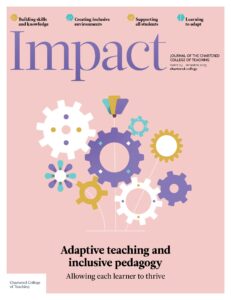Against the clock: Exploring the effectiveness of additional time, school-based interventions and the role of student buy-in
Written by: Ian Young and Sean Stockley

11 min read
IAN YOUNG AND SEAN STOCKLEY, THE BRITISH INTERNATIONAL SCHOOL OF HO CHI MINH CITY, VIETNAM
Introduction: The first study
It began in a corridor at the British International School (BIS) of Ho Chi Minh City in around February of 2022. Two department leaders – one for learning support (LS) and the other for physics – were talking about the implementation of access arrangements for IGCSE students. The physics leader (Sean) noted that while only some students were entitled to additional time, there may be more students that would benefit. At the same time, the LS leader (Ian) knew full well that evidencing and obtaining approval for such a thing was next to impossible.
The conversation was left until the following school year, when a new programme of continuous professional learning (CPL) was introduced at BIS, which included ‘action research’ as a pathway. We decided to use this opportunity to test the concept of whether additional time would benefit all learners in our sett
Join us or sign in now to view the rest of this page
You're viewing this site as a guest, which only allows you to view a limited amount of content.
To view this page and get access to all our resources, join the Chartered College of Teaching (it's free for trainee teachers and half price for ECTs) or log in if you're already a member.
- Brazeal KR, Brown TL and Couch BA (2016) Characterizing student perceptions of and buy-in toward common formative assessment techniques. CBE Life Sciences Education 15(4): 1–14.
- Briesch AM and Chafouleas SM (2009) Exploring student buy-in: Initial development of an instrument to measure likelihood of children’s intervention usage. Journal of Educational & Psychological Consultation 19(4): 321–336.
- Cavanagh AJ, Aragón OR, Chen X et al. (2016) Student buy-in to active learning in a college science course. CBE Life Sciences Education 15(4): ar76.
- Cavanagh AJ, Chen X, Bathgate M et al. (2018) Trust, growth mindset, and student commitment to active learning in a college science course. CBE Life Sciences Education 17(1): ar10.
- Deci EL, Koestner R and Ryan RM (2001) Extrinsic rewards and intrinsic motivation in education: Reconsidered once again. Review of Educational Research 71(1): 1–27.
- Deci EL and Ryan RM (2000) The “what” and “why” of goal pursuits: Human needs and the self-determination of behavior. Psychological Inquiry 11(4): 227–268.
- Deci EL, Vallerand RJ, Pelletier LG et al. (1991) Motivation and education: The self-determination perspective. Educational Psychologist 26(3–4): 325–346.
- Eckert TL, Eggleston BN, Hamsho NF et al. (2021) Assessing children’s perceptions of intervention acceptability ratings. Psychology in the Schools 58: 1962–1979.
- Gagné M and Deci EL (2005) Self‐determination theory and work motivation. Journal of Organizational Behavior 26(4): 331–362.
- Grebing EM, Edmunds JA and Arshavsky NP (2023) The relationship between buy-in and implementation: Measuring teacher buy-in to a high school reform effort. Evaluation and Program Planning 97: 102224.
- Kennedy E (2015) The revised SEND code of practice 0–25: Effective practice in engaging children and young people in decision‐making about interventions for social, emotional and mental health needs. Support for Learning 30(4): 364–380.
- Lovett BJ (2010) Extended time testing accommodations for students with disabilities. Review of Educational Research 80(4): 611–638.
- Moss JD (2021) Inviting autonomy: Common roots and beliefs of self-determination theory and invitational education theory. Journal of Invitational Theory and Practice 24: 17–28.
- Reeves PM, Cavanagh AJ, Bauer M et al. (2021) Cumulative cross course exposure to evidence-based teaching is related to increases in STEM student buy-in and intent to persist. College Teaching 71(1): 66–74.
- Ryan AM, Pintrich PR and Midgley C (2001) Avoiding seeking help in the classroom: Who and why? Educational Psychology Review 13(2): 93–114.
- Schunk DH (1999) Social-self interaction and achievement behavior. Educational Psychologist 34(4): 219–227.
- Schunk DH and Zimmerman BJ (1997) Social origins of self-regulatory competence. Educational Psychologist 32(4): 195–208.
- Schunk DH and Zimmerman BJ (2007) Influencing children’s self-efficacy and self-regulation of reading and writing through modeling. Reading & Writing Quarterly 23(1): 7–25.
- Silva MR, Collier‐Meek MA, Codding RS et al. (2019) Acceptability assessment of school psychology interventions from 2005 to 2017. Psychology in the Schools 57(1): 62–77.
- Sireci SG, Scarpati SE and Li S (2005) Test accommodations for students with disabilities: An analysis of the interaction hypothesis. Review of Educational Research 75(4): 457–490.
- Tsai S and Kern L (2019) Stability and predictors of students’ treatment acceptability of check & connect across time. Journal of Emotional and Behavioral Disorders 28(4): 235–243.
- Wang C, Cavanagh AJ, Bauer M et al. (2021) A framework of college student buy-in to evidence-based teaching practices in STEM: The roles of trust and growth mindset. CBE Life Sciences Education 20(4): ar54.
- Wigfield A and Eccles J (2000). Expectancy–value theory of achievement motivation. Contemporary Educational Psychology 25(1): 68–81.
- Xu C, Huizinga M, Ekubagewargies DT et al. (2024) The relation between teacher–student interaction and executive function performance in children: A cross-cultural meta-analysis. Educational Psychologist 59(3): 195–215.
- Yeager DS, Dahl RE and Dweck CS (2018) Why interventions to influence adolescent behavior often fail but could succeed. Perspectives on Psychological Science 13(1): 101–122.
0
0
votes
Please Rate this content
Please login to comment
0 Comments
Oldest
Newest
Most Voted
Inline Feedbacks
View all comments










